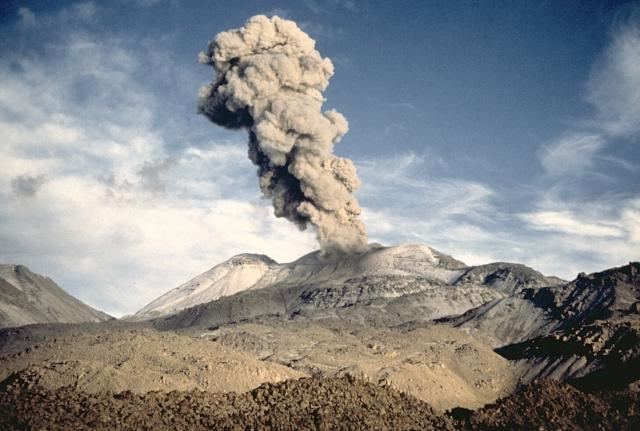Prominence ~ 500 m (1,600 ft) Last eruption 2003 | Volcanic arc/belt Central Volcanic Zone Elevation 5,976 m Parent range Andes | |
 | ||
Similar | ||
Sabancaya volcano peru worlds highest erupting volcano in 21st century
Sabancaya is an active 5,976-metre (19,606 ft) stratovolcano in the Andes of southern Peru, about 100 kilometres (62 mi) northwest of Arequipa. It is the most active volcano in Peru and is part of a 20-kilometre (12 mi) north-south chain of three major stratovolcanoes, including the extinct and eroded 6,025-metre-high (19,767 ft) volcano Hualca Hualca at the northern end, the dormant 6,288-metre-high (20,630 ft) volcano Ampato to the south, and Sabancaya in the middle. Sabancaya hosts several glaciers which cover an area of about 3.5 square kilometres (1.4 sq mi) and descend as low as 5,400 metres (17,700 ft) on its flanks.
Contents
- Sabancaya volcano peru worlds highest erupting volcano in 21st century
- Map of Sabancaya Peru
- Volcanic activity
- Volcanic hazards
- References
Map of Sabancaya, Peru
Volcanic activity
The andesite stratovolcano of Sabancaya has been very active during historic times, with the earliest recorded eruptions in 1695 and 1758 (other sources list 1750 and 1784 as possible eruptions, too). Following over 200 years of dormancy, satellites detected an increase in thermal emission in July 1986 and intense activity resumed in December of that year, with several eruptive cycles over the next two years producing a lava dome in the crater.
The most sustained period of activity began with explosive eruptions on May 28, 1990, and continued for over eight years. The eruptive cycle rated a VEI of 3, with more than 25 million cubic metres (880×10^6 cu ft) of lava flows and tephra produced over that period. At the height of the activity in 1994, eruptions producing large ash clouds occurred every two hours. Although published topographic maps have not been revised since the eruptive cycle, it is suspected that the cone may have grown to just over 6,000 metres (20,000 ft) during that time. Additional smaller eruptions occurred in 2000 and 2003.
Volcanic hazards
Sabancaya is considered one of the most hazardous volcanoes in Peru, along with the massive Coropuna and the cone of El Misti near Arequipa. As of the mid-1990s, over 8,000 people lived in the valleys draining the flanks of the volcano. Potential hazards include lahars and pyroclastic flows down the Majes, Colca, and Siguas river drainages. During the 1988 eruption, cattle died in nearby areas either directly from poisonous volcanic gases or from eating contaminated vegetation.
